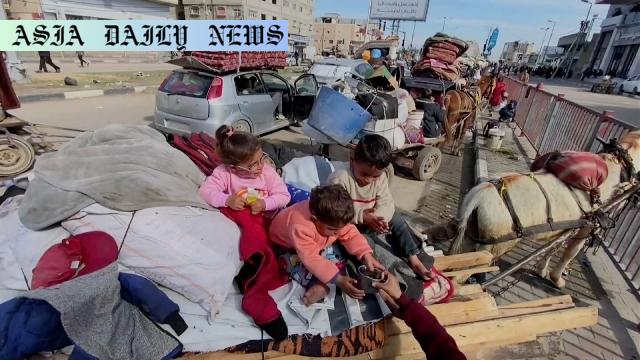Ceasefire: A week into the six-week ceasefire between Israel and Hamas, marked by reduced clashes and humanitarian aid delivery.
- Ceasefire agreement between Israel and Hamas enters second week.
- 7 Israeli hostages released; 290 Palestinian prisoners freed.
- Humanitarian aid deliveries to Gaza have significantly increased.
- Israel moves to ban UNRWA’s operations in Jerusalem.

Introduction to the Ceasefire Agreement
On January 19, 2024, a six-week ceasefire between Israel and Hamas officially began in the Gaza Strip, marking a week of relative peace following months of hostilities. This temporary truce aims to facilitate humanitarian actions, build trust between the parties, and work towards a potential permanent peace agreement in the region.
Progress in the First Week
Since the ceasefire started, both sides have largely refrained from engaging in major clashes, offering some respite to the war-torn region. On the humanitarian front, Hamas has released seven Israeli hostages in exchange for 290 Palestinian prisoners. The releases included three women on the first day of the truce and four female soldiers handed over on Saturday.
Increased Humanitarian Aid
The ceasefire has also brought about a significant increase in humanitarian aid to the Gaza Strip. Hundreds of trucks carrying essential food supplies are now entering the region daily, facilitated by multiple international organizations, including United Nations (UN) agencies. This influx of aid has been critical for those affected by the conflict, ensuring that basic needs are met during this fragile pause.
Future Hostage Releases
As part of the truce agreement, Hamas is expected to release 26 more hostages over the remaining five weeks. Observers are monitoring the situation closely to see how this process unfolds and whether it will lead to sustained dialogue and further releases beyond the current agreement.
The Bigger Picture: Path to Permanent Peace?
This ceasefire represents the first phase of a negotiated process, potentially paving the way for a more comprehensive and permanent peace initiative. However, skepticism remains, as past efforts have often been thwarted by renewed violence and political disagreements.
Controversy Surrounding UNRWA
Amidst these developments, Israel’s government is set to implement a controversial law banning the United Nations Relief and Works Agency for Palestine Refugees in the Near East (UNRWA) from operating within its territories, including Jerusalem. The law, scheduled to take effect on January 30, has been met with criticism from UN officials, who argue that it contradicts international law and Israel’s obligations as a UN member state. The potential impact of this decision on the ongoing truce and the humanitarian situation in Gaza remains uncertain.
Conclusion
While the six-week ceasefire marks a critical step towards easing tensions, significant challenges lie ahead. The coming weeks will reveal whether this truce can serve as a foundation for lasting peace in a historically volatile region. The international community must continue to play an active role in mediating, providing aid, and ensuring that all parties adhere to the agreements.



Commentary
An Optimistic Step Forward
The ongoing six-week ceasefire between Israel and Hamas has undoubtedly provided a much-needed respite for both parties involved and, more importantly, the civilians caught in the crossfire. The release of hostages and the increase in humanitarian aid delivery are encouraging signs of progress. These positive developments set a hopeful tone for what could potentially serve as a roadmap to long-term peace if handled delicately.
Challenges to Consider
However, it is essential to recognize the challenges that remain. Issues such as the planned ban on UNRWA operations in Jerusalem risk undermining the fragile trust being built during this ceasefire. Furthermore, the promise of releasing more hostages must be fulfilled to maintain momentum toward dialogue. History has shown that unilateral actions often hinder rather than help peace-building efforts, and this time should be no different.
The Importance of Global Mediation
The world’s eyes are on this region, and as this ceasefire progresses, international mediators must play a crucial role in bridging the gap between the two sides. It is not enough simply to maintain the status quo; steps toward reconciliation must be accompanied by tangible actions that address the long-standing grievances of both parties.
Hope for a Permanent Resolution
In the end, this ceasefire represents an opportunity – one that should not be wasted. If the involved parties, with the support of the global community, can sustain and build upon this fragile peace, there is a chance to move toward a resolution that benefits all. For now, however, we wait and watch, hoping that this truce holds and fosters a brighter future for generations to come.